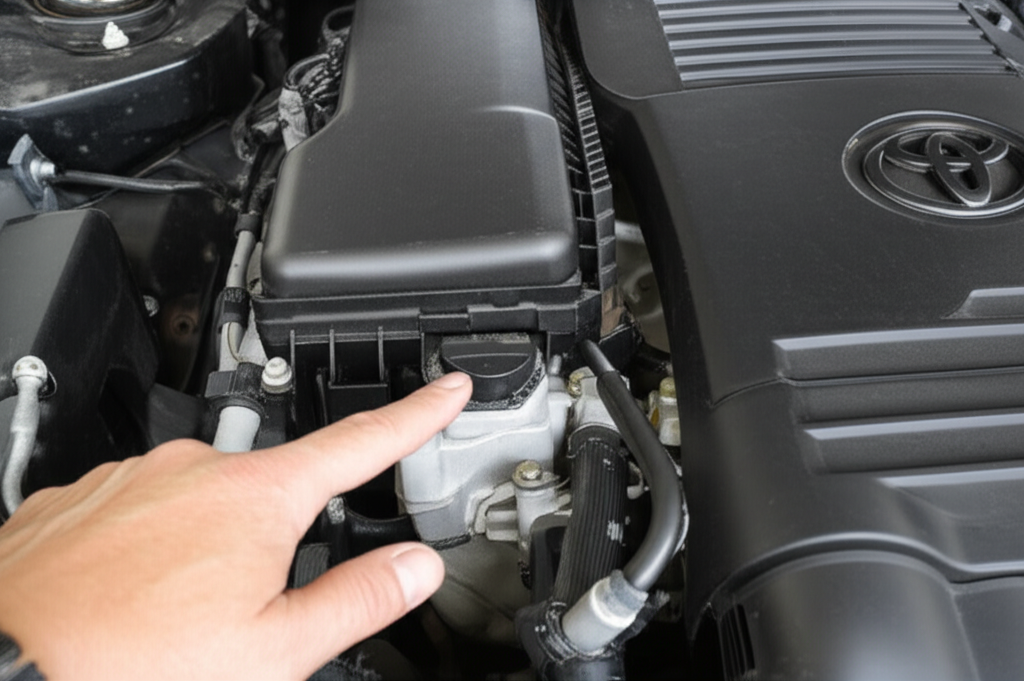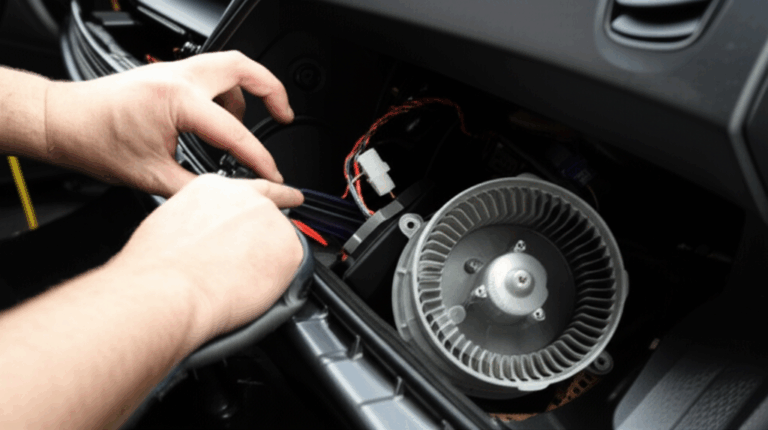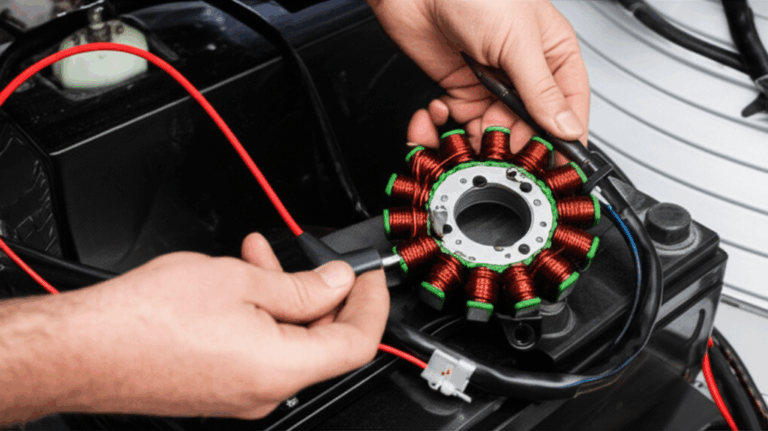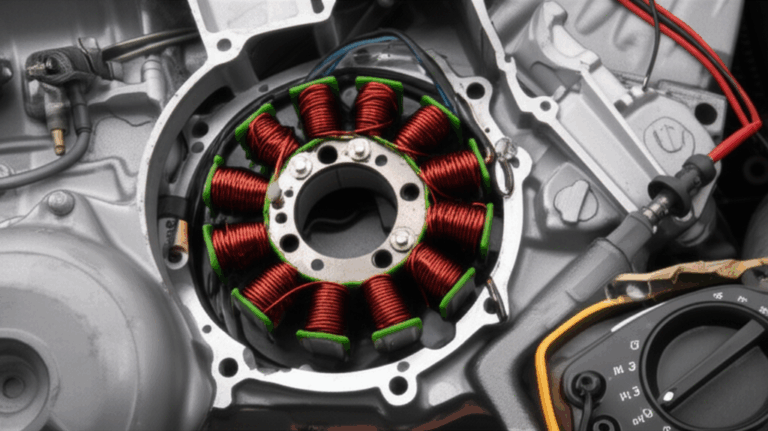
Motor Lamination Design Choices: A Practical Guide to Material, Thickness, and Manufacturing
Every design engineer faces the same crunch. You want higher motor efficiency without blowing up cost or lead time. Procurement wants reliable supply and clear specs. Manufacturing needs parts that build cleanly and repeatably. If you’re weighing lamination material, thickness, and process choices for a motor core, you’re in the right place.
In this guide I’ll break down the physics in plain language, show you how materials and processes shift performance and cost, and give you a practical playbook you can act on today. You’ll walk away ready to make a confident choice and to brief your lamination supplier with clarity.
In This Article
- Why this matters: the real engineering problem
- Core physics made simple: hysteresis, eddy currents, and stress
- Material choices and trade‑offs
- Manufacturing and assembly processes that shape performance
- Matching solutions to your application
- What to ask for in quotes and data sheets
- Tolerances, thermal, and mechanical considerations
- Cost levers and supply chain risk
- A practical step‑by‑step playbook
- References and standards you can trust
- Key takeaways and a smart next step
Why This Matters: The Real Engineering Problem
You’re balancing a three‑way trade. Performance, cost, and supply risk. Move one and the others shift.
- You want higher efficiency and power density. That pushes you toward thinner laminations, better coatings, tighter stacks, and higher grade steels.
- You want cost control. That favors common gauges, progressive stamping, and streamlined assembly.
- You want supply security. That means grades and coatings available from more than one mill, clear specifications, and well understood test methods.
The catch is simple. Lamination choices silently lock in motor behavior. Core loss sets temperature rise and efficiency. Saturation margin defines peak torque. Mechanical integrity controls noise, vibration, and durability. If you pick right you ship a cooler, quieter motor that lasts longer. If you pick wrong you fight heat, acoustic issues, and late design churn.
Let’s build the foundation first.
Core Physics Made Simple: Hysteresis, Eddy Currents, and Stress
When your stator and rotor see a changing magnetic field, two loss mechanisms dominate in the steel. Hysteresis and eddy currents.
- Hysteresis loss comes from the energy needed to flip magnetic domains back and forth each cycle. Picture tiny compass needles inside the steel. You twist them one way and then back. That work turns into heat. Hysteresis scales roughly with frequency and with how hard you push flux density. Materials with lower coercivity reduce this loss.
- Eddy current loss comes from Faraday’s law. Changing flux induces circulating currents inside the metal. Those loops make heat. Think of eddy currents like small whirlpools in a river. Thinner, insulated laminations break big whirlpools into tiny ripples. That drops loss. Eddy currents scale strongly with lamination thickness, frequency, and flux density. Higher resistivity helps too.
Two more basics matter a lot.
- Magnetic permeability tells you how easily the material carries magnetic flux. Imagine a sponge soaking up water. A high permeability sponge fills fast with less pressure. In motors that means you get desired flux with less magnetizing current.
- Saturation flux density caps your usable flux. If you push past it the core stops carrying more flux and torque suffers. Cobalt‑iron alloys win on saturation margin. Silicon steels strike a balance.
A hidden culprit often bites teams late. Mechanical and thermal stress. Cutting, stamping, welding, and clamping all add stress to the steel. Stress lowers permeability and raises loss. It shifts your carefully modeled motor into a hotter, noisier reality. You can mitigate that with edge quality control, stress relief annealing, and low‑stress assembly methods.
Last, do not ignore coatings and stacking factor. Each lamination carries an insulating coating. That blocks interlaminar currents and eddy loss. It also steals a bit of space. Stacking factor is the ratio of steel height to total stack height. A 0.95 stacking factor means 5% of your stack is insulation and micro‑air. You design around it because it changes the effective cross‑section and inductance.
Material Choices and Trade‑offs
You have a menu, not a single correct answer. Here is how to navigate it with your application and constraints in mind.
Non‑Oriented Silicon Steels (NOES, M‑grades)
This is the workhorse for rotating machines. You’ll often see grades labeled M19, M27, M36, etc. Lower numbers generally mean lower loss at a given test point. Gauges range from about 0.50 mm down to 0.20 mm and thinner for high frequency work.
Pros:
- Balanced cost and performance
- Isotropic behavior suitable for rotating fields
- Wide availability in multiple regions
- Compatible with stamping and laser cutting
Cons:
- Loss grows at higher frequencies if you use thicker gauges
- Mechanical strength depends on gauge and process
- Performance lags exotic alloys in extreme duty
When should you pick NOES? Most industrial AC motors, many BLDC motors, and traction motors up to mid frequencies. If you push frequency above a few hundred hertz, move to thinner gauges or consider advanced grades.
If you want a broad primer on these materials and their role in motor cores, see this overview of electrical steel laminations.
Cobalt‑Iron Alloys
If you need high flux density and power density you will look at cobalt‑iron, like 49% Co alloys. These give you higher saturation and strong mechanical strength. You can run at higher flux without saturating which helps torque density.
Pros:
- High saturation flux density for torque margin
- Lower loss at high induction in many cases
- Strong mechanical properties for high speed rotors
Cons:
- High raw material cost
- Trickier to process and anneal
- Limited suppliers and longer lead times
Pick cobalt‑iron for aerospace, high speed machines, and tight weight budgets when cost allows. You will need tight process control and clear acceptance tests.
Nickel‑Iron Alloys
Nickel‑iron can deliver high permeability and low coercivity. These materials see use in sensors and specialized machines more than mainstream traction motors.
Pros:
- Very high permeability
- Low hysteresis in some compositions
Cons:
- Lower saturation flux density than cobalt‑iron
- Higher cost than NOES
- Niche supply chains
Use these when you need soft magnetic behavior and can trade off saturation.
Amorphous and Nanocrystalline
These shine in transformers at high frequency due to very low eddy current loss. Rotating machines can use them in select cases but they bring process challenges.
Pros:
- Extremely low specific loss at high frequency
- Thin ribbons reduce eddy loss further
Cons:
- Harder to stamp into complex shapes
- Lower mechanical robustness for rotating stacks
- Limited forms and stacking methods
They can make sense in specialty high‑frequency machines with simple geometries. You will likely prototype with laser cut segments or C‑cores and accept process limits.
Insulation Coatings and Stacking Factor
Coating class matters. It sets interlaminar resistivity, temperature rating, and bonding options. Standards like ASTM A976 classify coatings by type and performance. Organic plus inorganic blends often give good adhesion and electrical resistance. Inorganic coatings handle higher temperature. Backlack coatings allow bonding without extra adhesive which can lower loss and boost stiffness.
Specify:
- Coating class and temperature rating
- Target interlaminar resistance
- Stacking factor target at your gauge
- Suitability for bonding or varnish impregnation
Coating choice interacts with assembly. Bonded stacks can reduce vibration and lower noise. Welded stacks concentrate stress near welds and can raise local loss. You make the trade based on the application and the final NVH target.
Manufacturing and Assembly Processes That Shape Performance
How you cut and stack laminations matters as much as what you cut. Edge quality, stress, burrs, and joining methods all push loss and noise up or down.
Progressive Die Stamping
For volume production with stable geometry, progressive stamping wins on cost and speed. You pay for tooling once, then your price per part drops and your throughput rises.
Strengths:
- Lowest per part cost at scale
- Consistent edges and burr control with good tooling
- Tight repeatability and high throughput
- Easy to add interlocks and features
Watch outs:
- Upfront tooling cost and lead time
- Tool wear and burr growth if maintenance slips
- Bridge “tie” features can add magnetic loss if overused
- Stamping stress can raise loss if you skip anneal
Burr height control is critical. A burr that looks small can slash performance because it can short laminations and raise eddy currents. Specify maximum burr height and measure it. You can use deburr processes and stress relief anneals to recover properties.
Laser Cutting
Laser cutting shines for prototypes and low volumes. You get freedom to tweak slots, skew angles, and tooth shapes without new tools. Complex profiles are no problem.
Strengths:
- No tooling needed and fast design cycles
- High precision on small lots
- Great for early design exploration and custom shapes
Watch outs:
- Heat affected zone along edges can raise loss
- Microcracks or rough edges if parameters drift
- Post cut anneal often needed to restore properties
- Per part cost rises fast at volume
If you go this route, plan for a stress relief anneal. That step restores magnetic properties damaged by edge heat. You will want test coupons cut from the same plate, the same day, under the same conditions.
Wire EDM and Waterjet
Wire EDM cuts without a heat affected zone which helps loss. It is slower and more expensive. Waterjet avoids heat but can leave a rough edge and adds contamination concerns.
Use these when laser edge damage is intolerable and volume is low.
Joining and Stack Assembly
How you turn loose laminations into a stator or rotor stack sets noise and loss.
- Interlocking tabs act like LEGO bricks and lock sheets together mechanically. You avoid welding which can hurt magnetic properties. You do add small bridges that can raise localized loss.
- Bonding can use backlack coatings or added adhesives. Bonded stacks cure into a rigid core. You get uniform stiffness and fewer localized stress points. You often see lower audible noise and vibration.
- Welding is common and can be robust. It adds localized heat and stress. Keep welds away from flux hot spots where possible. Use minimal energy and short dwell.
- Riveting and cleats can work for simple stacks or serviceable assemblies. They add complexity and potential looseness over time.
Plan skew early. Skewed stator teeth reduce cogging torque and acoustic tones. You can do step skew with discrete segments or a continuous skew if your process allows it. Skew interacts with slot shape and winding method.
If you want a quick refresher on the role of the stator stack itself, this short primer on stator core lamination is helpful. For rotors and their unique mechanical demands, see this overview of rotor core lamination. If you need a broad snapshot of stack construction choices across both sides, this page on motor core laminations gives a clear summary.
Matching Solutions to Your Application
Let’s map the right choices to common applications. You can then fine tune the details with measurements.
50/60 Hz Industrial Motors
- Material: Standard NOES in common gauges like 0.35 mm to 0.50 mm
- Loss focus: Hysteresis dominates at lower frequencies for thick gauges. Keep flux density moderate to avoid loss spikes and saturation
- Process: Progressive stamping for cost and consistency
- Assembly: Interlock or weld for robustness. Impregnate windings for stiffness and cooling
This is the sweet spot for classic M‑grades. You want reliable supply and straightforward specs.
High‑Speed BLDC and PMSM Traction Motors
- Material: Higher grade NOES in thinner gauges like 0.20 mm to 0.27 mm. Consider cobalt‑iron for extreme torque density
- Loss focus: Eddy currents surge with frequency. Thin laminations and good coating resistivity matter
- Process: Stamping for volume, laser for prototypes. Plan a stress relief anneal after laser cutting
- Assembly: Bonded stacks to raise stiffness and drop acoustic tone peaks. Step skew to reduce cogging
You fight heat at speed. Thin laminations are the most powerful lever to cut loss. They cost more and often need careful handling.
Aerospace and Ultra‑High Power Density Machines
- Material: Cobalt‑iron for saturation margin and strength
- Loss focus: You will often run high induction. Balance loss against torque needs
- Process: Precision stamping with strict burr control or wire EDM for critical parts. Stress relief anneal is standard
- Assembly: Bonding or carefully placed welds. Rotor burst strength and balance dominate safety
You live in a safety critical world. You test more. You document more. You lock process windows and inspect parts rigorously.
Prototyping Versus Production
Laser cut a handful of iterations to finalize slot geometry and skew. Validate loss and temperature rise. Once you lock the electromagnetic design you tool up for stamping. Expect a small loss drop when you move from laser to stamping with a proper anneal. Validate again because fixtures, bonding, and winding can shift stress.
A Note on Transformers Versus Motors
Transformer cores often use grain‑oriented steels and simple E‑I or U‑I stacks. Rotating machines need non‑oriented steels because the magnetic field rotates. Do not mix the two unless you want odd behavior. If you work on transformer projects too, this short overview of transformer lamination core can refresh the basics.
What to Ask For in Quotes and Data Sheets
Strong specs prevent surprises. Here is a checklist to use with suppliers.
Magnetic data at your operating points:
- Core loss W/kg at your target flux density and frequency. Not just at the mill’s standard 1.0 T at 50/60 Hz
- Permeability curve or B‑H curve across your expected induction range
- Saturation flux density at temperature
Material and coating details:
- Grade and gauge with tolerances
- Coating class per a recognized standard and its temperature rating
- Interlaminar resistance target and test method
- Stacking factor target for your stack geometry and coating
Manufacturing and quality details:
- Cutting process and edge quality control
- Burr height maximum and measurement method
- Flatness and camber limits for individual laminations
- Stack assembly method and adhesive details if bonded
- Stress relief anneal parameters and atmosphere if used
- Rotor balance grade for spinning parts and burst test protocol
Testing and acceptance:
- Test methods for magnetic properties. Reference IEC 60404 series where relevant so you align on Epstein or single sheet tester methods
- Measurement plan for production lots. Frequency of tests and traceability
- Dimensional inspection plan and GD&T callouts for critical features
Compliance and supply:
- Mill certificates and heat numbers for traceability
- Quality system certifications like ISO 9001 or IATF 16949 for automotive projects
- RoHS and REACH declarations if required
If a quote lacks these elements, ask for them. If a supplier cannot provide loss data at your conditions, request witness tests or send your own coupons.
Tolerances, Thermal, and Mechanical Considerations
Electromagnetics live in a mechanical world. Do not treat the steel as only a magnetic medium.
- Tolerance stack‑up changes slot opening and tooth width which shifts inductance, torque ripple, and noise. Call out key dimensions with realistic but tight GD&T. Focus on roundness, concentricity, slot pitch, and tooth thickness.
- Thermal behavior shifts everything. Loss makes heat. Heat changes resistivity, permeability, and adhesive stiffness. Model temperature rise and confirm with physical tests. Keep adhesive and coating temperature ratings above your worst case operating temperature.
- Mechanical stress pushes loss up. Clamping pressure, weld cooling, and interference fits all add stress. Use bonding to spread loads and reduce local stress spikes when possible. Anneal laser cut parts to recover magnetic properties.
- Rotors bring safety constraints. You must check burst speed and hoop stress with a conservative margin. Material strength and notch sensitivity matter at the slots and bridges. Balance the rotor dynamically to the right grade so you avoid adding stress in the field.
- NVH is not an afterthought. Tooth pass frequency sets a primary tone. Skew knocks it down. Bonded stacks and tight assembly lower broadband noise. Winding impregnation adds stiffness which shifts modes and reduces buzz.
Cost Levers and Supply Chain Risk
You can hit a cost target without gutting performance if you use the right levers.
- Tooling amortization drives per part cost down at volume. If your design is stable, progressive stamping pays off fast.
- Gauge selection changes both cost and performance. Thinner gauges reduce loss at high frequency but cost more per kilogram and may have longer lead times. Use the thinnest gauge that meets loss and temperature targets with margin.
- Scrap and nest optimization matter. A clever die set can lift material utilization several points. That hits cost directly because steel is a big cost driver.
- Coating classes save steps. Backlack can eliminate extra adhesives which cuts assembly time. It might cost more in raw material but it can save money in total.
- Dual source critical items when you can. Pick grades with equivalents from more than one mill. Align coating classes to avoid requalification if you switch.
- Test once, buy many times. If you invest in a robust validation plan now you lower the chance of future line stops and rework.
A Practical Step‑by‑Step Playbook
Use this quick path when you move from concept to a sourced design.
1) Define operating points
- Frequency range, peak and continuous
- Target flux density by region of the core
- Ambient and temperature rise targets
- Torque and speed envelope
2) Down‑select materials
- Start with NOES for most designs. Pick two gauges if frequency spans wide
- Add cobalt‑iron as an option if you need torque density or high speed strength
- Choose coating class that matches your temperature and bonding plan
3) Pick a prototype process
- Laser cut a small set of laminations for A‑sample builds
- Plan a stress relief anneal
- Bond stacks if noise and stiffness matter
4) Measure early and often
- Test core loss at your flux density and frequency
- Measure temperature rise in a dynamometer or thermal bench
- Check acoustic signatures, torque ripple, and efficiency
5) Lock geometry and source tooling
- Freeze slot shape, skew, and tooth dimensions
- Engage a stamper for progressive dies
- Set burr height and flatness specs
6) Validate production process
- Run PPAP or a similar approval plan for automotive or safety critical projects
- Confirm magnetic properties lot to lot
- Audit stack assembly and bonding
7) Monitor and improve
- Track returns and noise complaints
- Feed data back into your next design
- Keep alternate grades qualified for supply resilience
References and Standards You Can Trust
You do not need to reinvent test methods or material definitions. Anchor your specs to recognized standards so everyone speaks the same language.
- IEC 60404 series. Methods for measuring magnetic properties of electrical steels. Includes Epstein frame and single sheet test procedures
- EN 10106 and EN 10107. European standards for non‑oriented and grain‑oriented electrical steel sheets
- ASTM A677. Specification for fully processed non‑oriented electrical steel
- ASTM A343/A343M. AC magnetic property test methods using wattmeter‑ammeter‑voltmeter setups at power frequencies
- ISO 9001 and IATF 16949. Quality management systems for general and automotive production
- IEEE Transactions on Magnetics. Peer reviewed research on magnetic materials and machine design
Use these as your reference points in drawings and purchase orders. You cut ambiguity and speed up approvals.
Key Takeaways and a Smart Next Step
- Loss comes from hysteresis and eddy currents. Thin laminations and low coercivity fight both
- Mechanical and thermal stress matter. They raise loss and shift acoustics
- NOES covers most rotating machines. Cobalt‑iron buys you torque margin and strength at a price
- Manufacturing choices shape performance. Stamping rules at volume. Laser helps you learn fast in prototypes
- Assembly is not neutral. Bonding lowers noise and spreads stress. Welding is robust but can add local loss
- Ask for data at your operating points. Do not rely only on mill spec points
- Lock burr and flatness specs. Validate with recognized test standards
- Control cost with tooling, gauge selection, and smart coatings. Diversify supply where you can
If you want a quick refresher or a visual overview for your team, point them to concise primers like the pages on stator core lamination, rotor core lamination, and the broader context of motor core laminations. They help non‑specialists get up to speed fast.
Ready to move from options to a decision? Pull your operating points together and draft a short RFQ summary with the checklist above. Then schedule a technical call with your lamination supplier. Ask for loss data at your conditions and a plan for edge quality, burr control, and stack assembly. You will leave that call with a clear path and a tighter estimate.
You design the motor. Your lamination choices make it sing.








